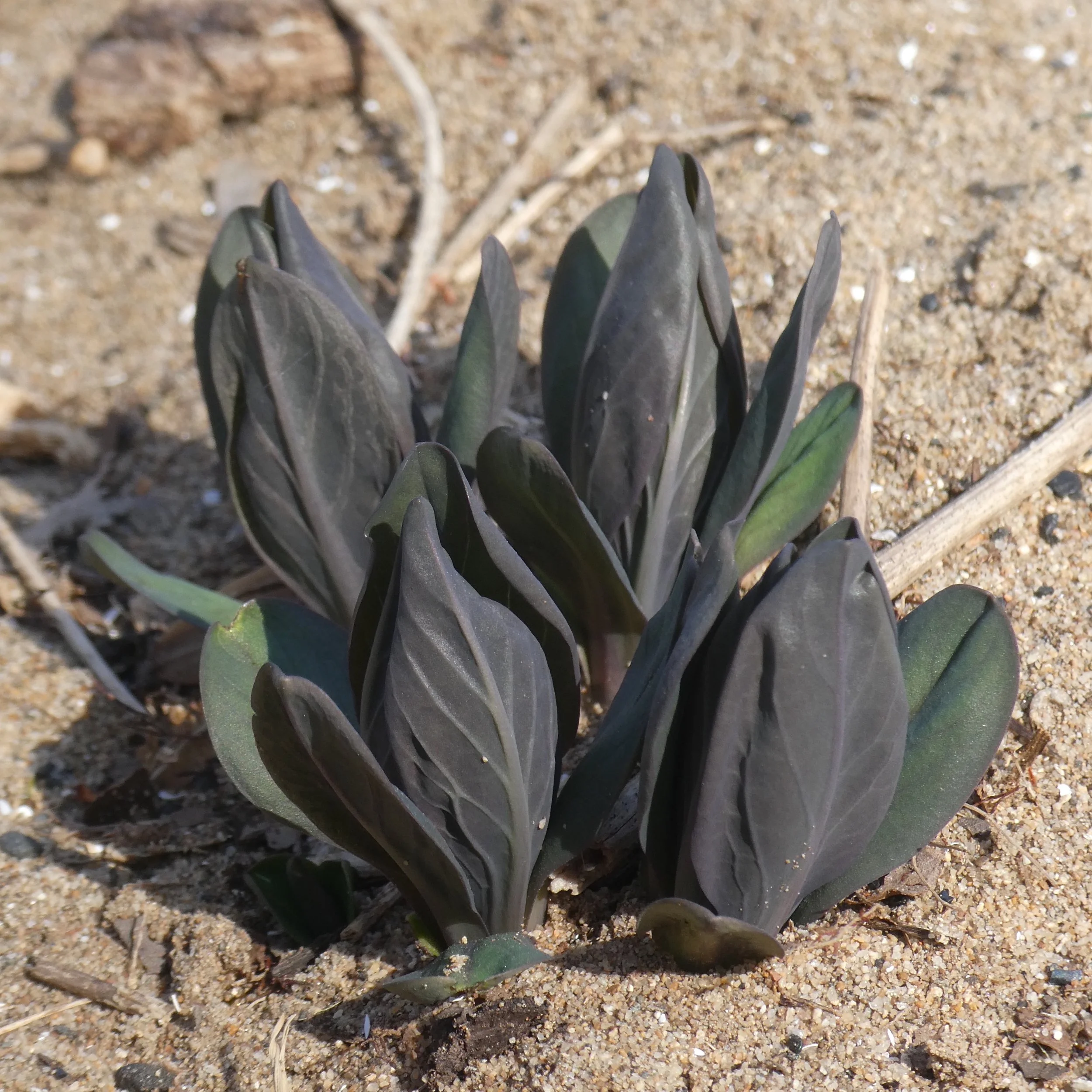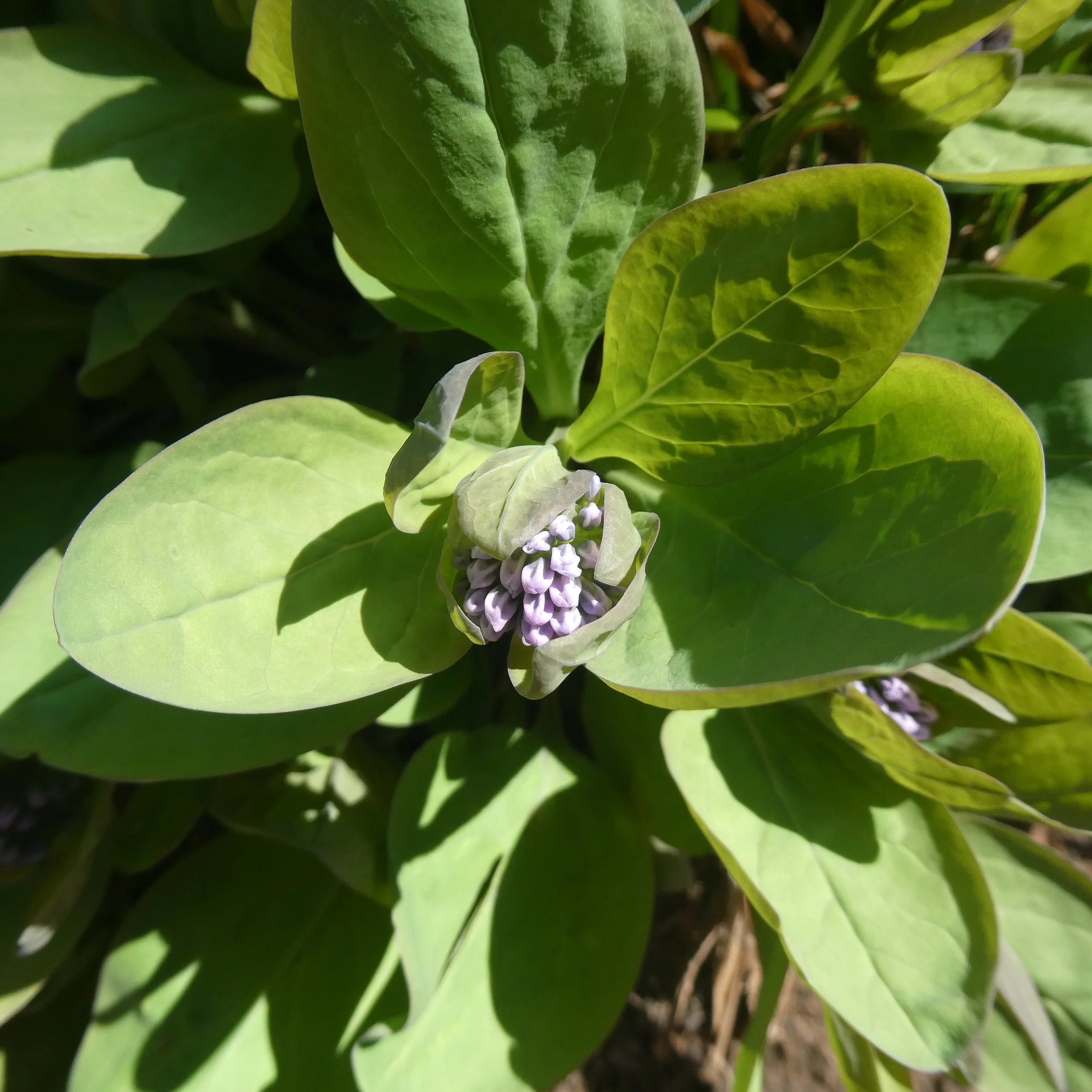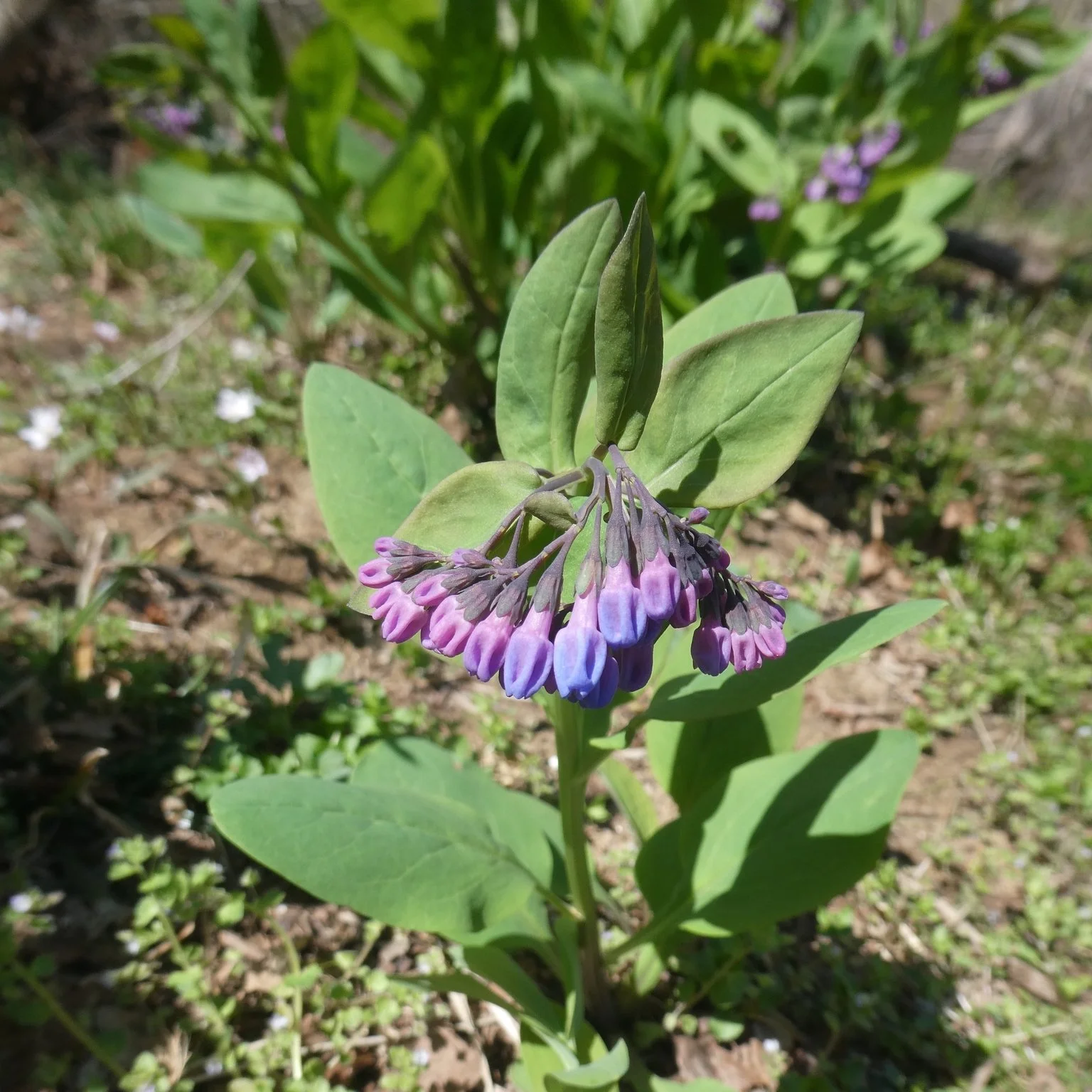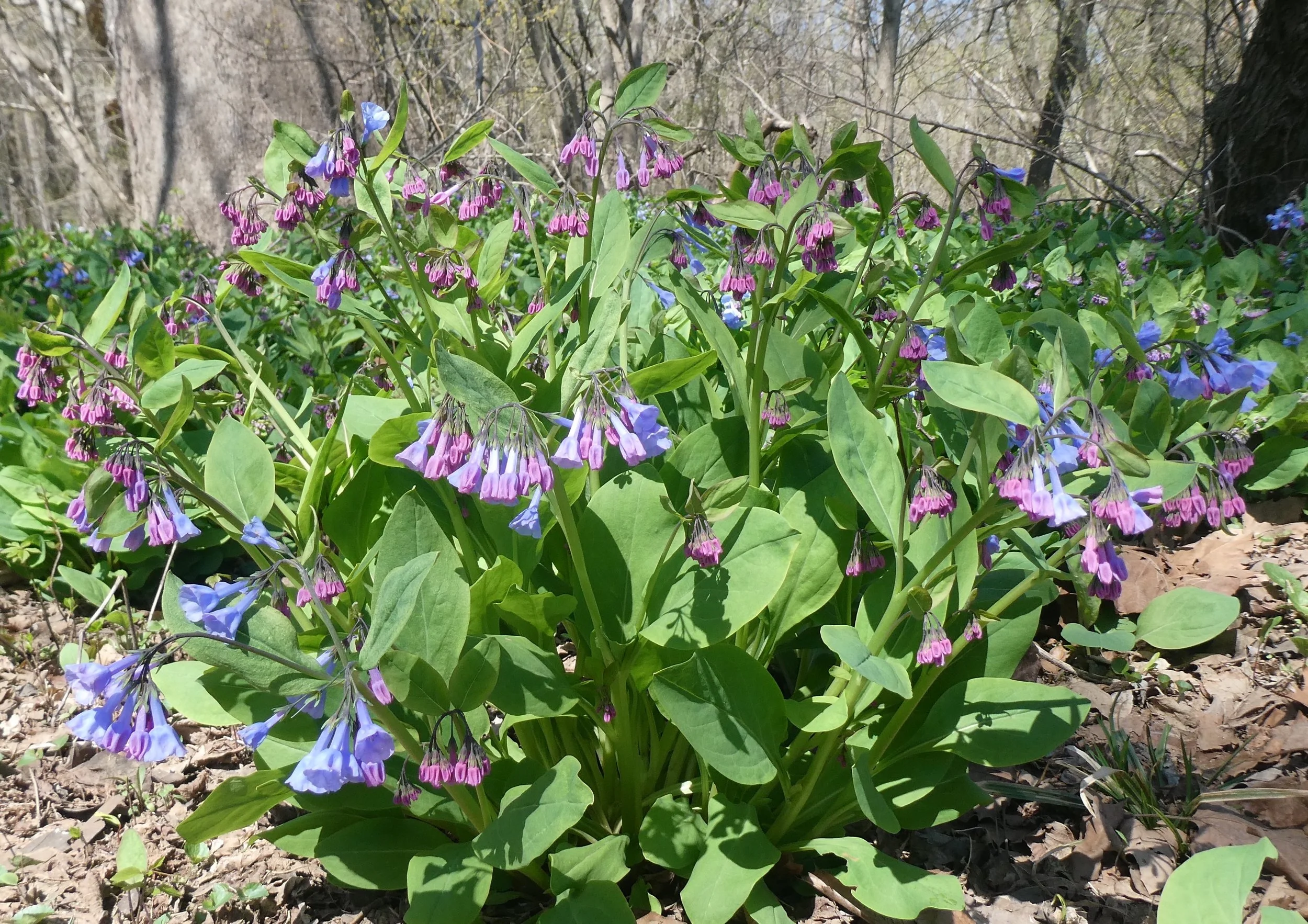Plant of the Week 3: Virginia Bluebells (Mertensia virginica)
Few wildflowers are more beautiful than Virginia Bluebells, which create a breathtaking sea of blue across floodplains during early spring. This species is a true spring ephemeral, which means it will finish flowering and producing seeds before the heat of the summer. Spring ephemerals have adapted to their wooded environments to utilize sunlight during the small window of time after winter and before the trees leaf out and block almost all of the sun.
The leaves are the first feature that will pop up out of the soil, and they will usually be a dark blue color. As the leaves grow, they will turn from blue to a nice light green. Tiny clusters of flower buds can be seen shortly after the leaves begin to emerge from the ground. Flower buds will start out as pink before turning a sky blue color as they open up. Below is the progression of Virginia Bluebells through the spring season (Clockwise starting at the top left).
Although less common, flowers can either stay the same pink as the buds or be completely white. Open flowers are arranged in nodding clusters and shaped like trumpets or bells (hence the name Bluebell). Peak blooming time occurs from late March to early May in Maryland. After flowering, around June, the foliage will die back and the plant will go dormant until the following spring.
Bluebells prefer woodlands with moist soils that are nutrient rich, so they are most frequently found in floodplain forests, bottomlands, and along riverbanks in moist woods. They are especially abundant along the C & O canal towpath in Maryland, Rock Creek Park in D.C., and Riverbend Park in Virginia.
Plant Virginia Bluebells in a shade garden as a spring groundcover or along the edge of trees and shrubs. Planting them in colonies offers the greatest displays throughout the spring. Just remember to pair other wildflowers or ferns alongside Bluebells to fill in the space when they go dormant.







